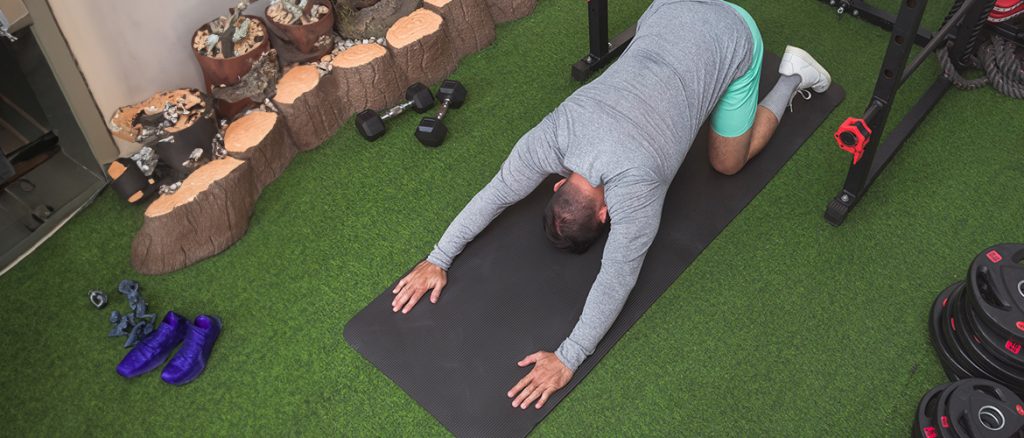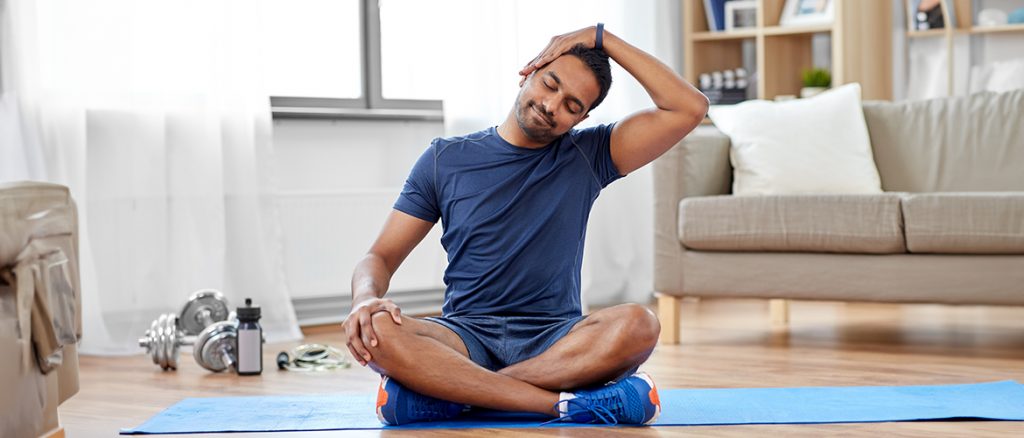Exercise is a very important aspect of human life, both physically and physiologically as it enables us to stay active, healthy, and fit to perform our everyday activities. Physical exercise for fitness can have an impact on the overall well-being of an individual. It carries innumerable benefits such as enhancing muscle strength, improving joint function, vitalizing brain function, managing weight, injuries, and mental rejuvenation. One form of physical activity that is very crucial in the exercise process is called stretching.
Stretching is a form of physical activity where your body’s muscles are flexed or lengthened resulting in an increased range of motion in your joints, enhanced muscle flexibility, and control. Stretching can be both deliberate and unintentional.
But practicing stretching as a part of your post-exercise routine keeps you physically fit, and your bodily movements in order, and assists in quicker workout recovery, coupled with multiple other benefits. It plays an important role for individuals to attain ideal outcomes such as reduced muscle soreness, enhanced performance, and better post-workout recovery. This healthy practice of stretching after a workout becomes more vital for working professionals of the modern age because a sedentary lifestyle taking prominence. Physical movements have become restricted due to the monotonous nature of the majority of the jobs, such as restrictive desk jobs, constant typing, and looking at screens for long periods.
Why should I stretch after a Workout?
To answer this question, we need to look at a list of benefits and importance of stretching after a workout:
Lowers injury risk – Stretching as a part of your post-workout recovery process increases the flexibility of the muscles and provides better mobility to the joints. It significantly reduces the risk of injury. Stretching regularly builds strength and reduces muscle soreness subsequently which lowers the chance of aggravating pain and injury.
Heightens the Range of Motion in the Joints– Regular Stretching after a workout will improve mobility or flexibility, enhancing the range of movement of the joints. This enables individuals to go about their day-to-day activities and their physical exercise routine unhampered. Muscle strain and stiff joints can be mitigated, making stretching vital for pain management.
Increases Blood Flow – Stretching after a workout improves the blood circulation to the targeted muscles due to which oxygen and other necessary nutrients are delivered, thus helping the restoring process by minimizing muscle soreness and fatigue.
Enhances the performance of physical activities: There will be a noticeable change in the performance of the individual such as an increase in work-out effectiveness. By promoting faster recovery and better flexibility, individuals can perform tasks for longer durations effectively.
Psychological well-being: Practicing stretching as a routine can have positive psychological impacts such as a sense of relaxation, calm, and composure for the individual. It is also said to develop a bond between the mind and the body. The body revitalizes and the mind relaxes leading to lesser stress, better sleep, and a positive outlook towards living.
Stretching for Pain Management: Stretching after a workout might not rid you of the pain completely but it will help diminish the pain to a large extent. This displays the importance of stretching for pain management.
How to stretch after a Workout?

There are numerous ways/positions for individuals to perform stretching after a workout. Like warming up pre-workout, cooling down post-workout is just as vital for optimal performance, pain management, and muscle recovery. This is because it helps your body get back to a steady state by regulating blood flow and improving the individual’s cardiovascular health. Now, let us understand how to stretch after a workout by learning a few key exercise techniques.
Key Upper body stretches:
Trapezius stretching: This form of stretching eases the tension in your neck, back, and shoulders. It not only increases the range of motion of these parts but also reduces muscle spasms, lowers muscle tension aid in better movement of the targeted muscles.

Lat stretches: These stretches help in gaining a good and stable posture. Additionally, it also alleviates back pain, reduces the risk of injury to the back, and enhances the mobility of the shoulder and the spine.
Chest stretches: They help reduce tightness in the upper body and promote faster relief of muscle soreness. This form of stretching is vital for athletes as it allows for better breathing capacity and endurance.
Wrist stretches: Flexing your wrists is important to avoid any strain. It is a low-impact stretch that should be performed regularly, especially by people who indulge in physical labour like lifting, moving, or heavy machinery usage.
Key Lower Body stretches:
Hamstring stretches: It is a form of stretching that is vital for dancers and gymnasts, who practice it to avoid muscle tears, and improve speed, agility, and overall performance. Hamstring stretches help with better flexibility which is also important for back pain relief.

Calves stretching: This is a crucial form of stretching that aids in providing stability to the lower body. Stretching your calves helps reduce the risk of injury during strenuous activities like running or walking for long periods.
How long should you stretch after a Workout?
There is not a definite time duration that one person must perform stretching after their workout. One can stretch for about 30- 60 seconds each per targeted muscle. But, performing a full body gentle stretching for about 5 minutes after every workout is recommended.
With this, we understand how “stretching after a workout” is essential in an individual’s workout routine. It holds great importance due to the benefits it carries such as comprehensive improvement in performance, fewer injuries, better control over our flexibility, enhanced range of motion, and faster muscle recovery after a workout. All these benefits eventually develop and nurture a healthier lifestyle for the individual.

